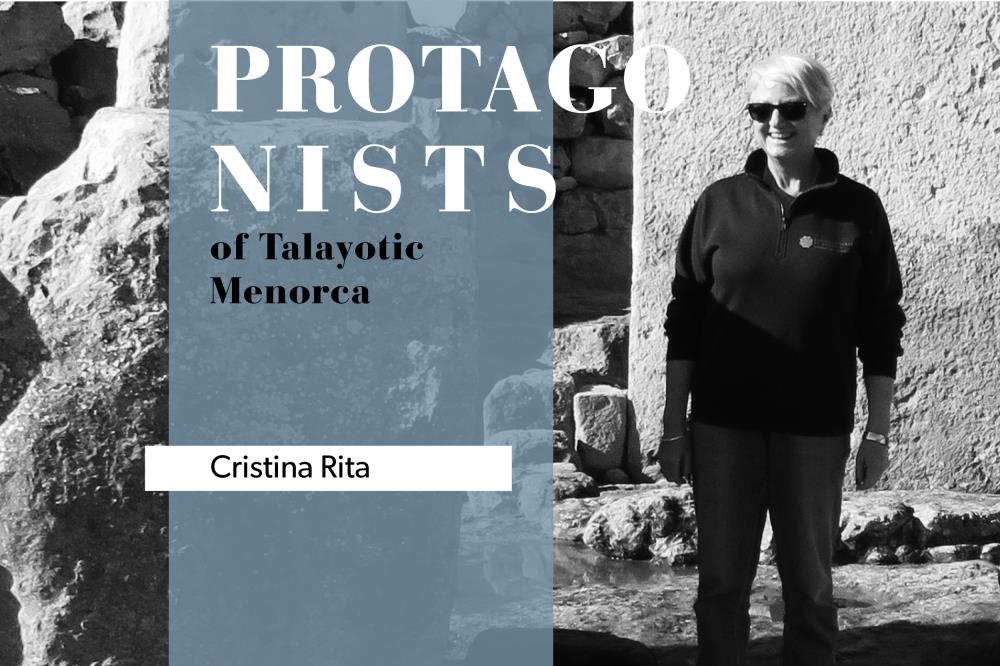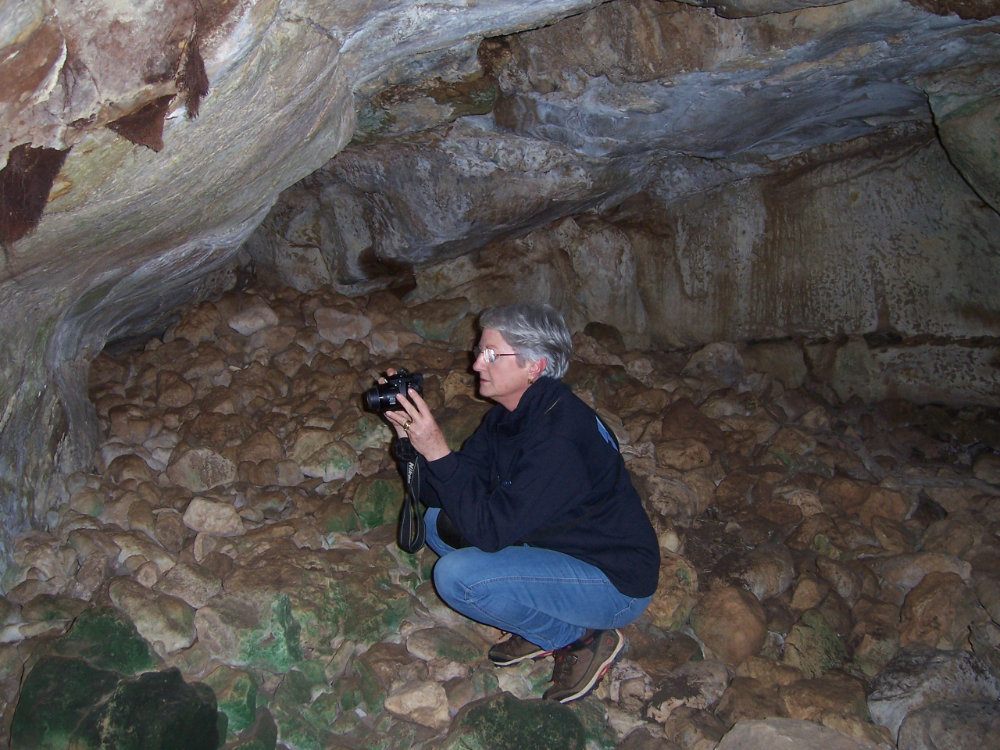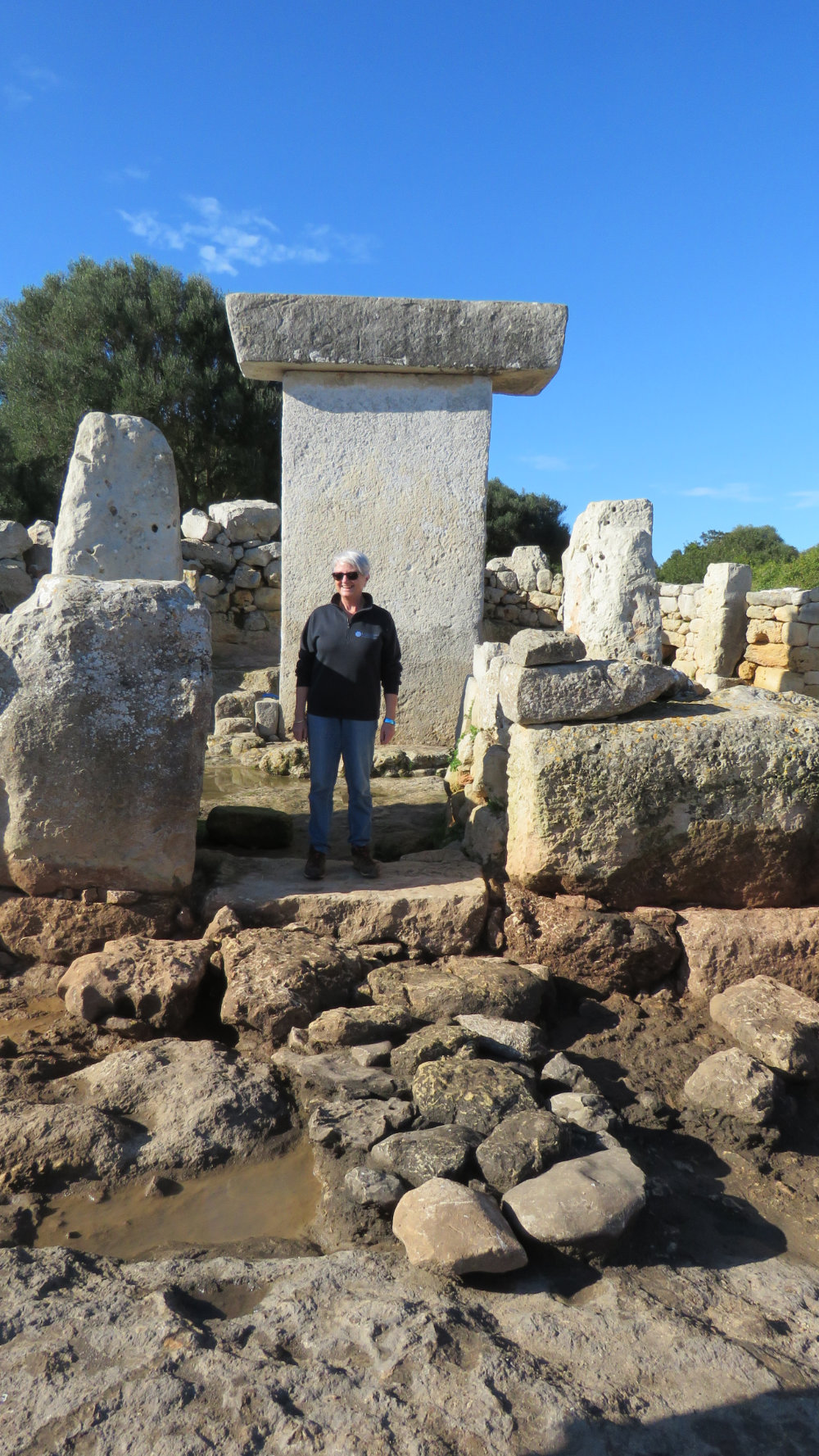 The Menorcan archaeologist and historian Cristina Rita Larrucea is a member of the Permanent Commission of Talayotic Menorca and president of the Scientific Council of the Institut Menorquí d'Estudis since 2020, an institution of which she is one of the founders. She has a degree in Philosophy and Humanities, specializing in Prehistory and Ancient History, from the University of Barcelona, ??she also has a master's degree in Museology and Cultural Heritage Management from the same university. Apart from her work as a researcher, at the beginning of her career she worked as an assistant at the Museu de Menorca and later as an archaeologist at the Consell Insular de Menorca, being appointed director of the Historical Heritage Service in 2000.
The Menorcan archaeologist and historian Cristina Rita Larrucea is a member of the Permanent Commission of Talayotic Menorca and president of the Scientific Council of the Institut Menorquí d'Estudis since 2020, an institution of which she is one of the founders. She has a degree in Philosophy and Humanities, specializing in Prehistory and Ancient History, from the University of Barcelona, ??she also has a master's degree in Museology and Cultural Heritage Management from the same university. Apart from her work as a researcher, at the beginning of her career she worked as an assistant at the Museu de Menorca and later as an archaeologist at the Consell Insular de Menorca, being appointed director of the Historical Heritage Service in 2000.
How did your interest in Archeology arise?
It started from a very young age. I really liked history in general and at home my parents always encouraged reading. My mother, who was a teacher, bought the magazine Selecciones from Reader's Digest, the Unesco Courier, they gave us books from the Historias collection; we also had an encyclopedia, Salvat's El mundo de los niños (I still have it), with many interesting things explained as stories. At that time, we hardly watched television and we didn't have tablets or cell phones, so I used to read. When I came across pre-Columbian cultures and Pharaonic Egypt they fascinated me, and I decided that I would be an archaeologist. Also, because of the desire for adventure, which seemed to me to be implicit in the discovery of ancient civilizations.
And what was it that attracted you to the study of Talayotic culture?
I began to appreciate what was around me, which is also spectacular. While I was studying Prehistory and Ancient History in Barcelona, I started asking myself questions about the daily life of the ancient settlers of Menorca and the uniqueness of our native culture.
What attracts me the most about studying Talayotic culture are the initial and final periods, that is, the pre-Talayotic moment and the Romanization period. In short, the times of change and evolution within societies.
You are part of the Talayotic Menorca’s Permanent Commission. How have you lived the transformation process of the candidacy’s file?
I have found it absolutely exhilarating and significant. Huge work has been done, first deciphering what UNESCO wanted to tell us in its report about the first file. This entailed doing a preliminary taks of consultation with international experts to approach the candidacy with a different perspective: it was not only about the assessment of a series of spectacular monuments, which were examples of the authenticity and integrity of unique and universal values; but also about making a detailed analysis of the Talayotic culture in its multiple aspects, one of them being its relationship with the landscape. In a short time, exceptionally interesting new studies were carried out, that allowed us to better understand the culture and explain it to others properly. All Menorcan archaeologists, and some from outside the island, participated in this process. It has been a real team effort with a common goal.
From my personal experience, the result of this process is that we now know much more about Talayotic culture and value the evolution and transformation of this very small island (the Odyssey of a culture, as the candidacy is titled). Finally, and selfishly, it has allowed us to deal first-hand with world renowned specialists who have helped us because they also believe in the universal value of Talayotic culture. Oherwise, we would only know them from the bibliography.
As an expert, you have participated in the ICOMOS evaluation mission. What sensations did you have? Are you optimistic?
Yes I am optimistic. I believe that the work done has had the deserved recognition. Specially, the new editor of the file, Cipriano Marín, and the team of the Heritage Service of the Consell Insular led by conseller Miquel Àngel Maria and Antoni Ferrer, and also with the technician Joaquín Pons. Lobbying has also been done at a national and international level to promote the candidacy, in which the Ministry of Cultural Affairs and the Spanish ambassador to UNESCO have intervened. That had not been done before and is necessary at this stage.
Now that I am retired, every time that my participation was requested for meetings and excursions I have been able to appreciate the professionalism of a cohesive team that has managed to transmit, beyond the file itself, the exceptionality of Talayotic culture and its landscape. My impression is that the evaluator has appreciated the work done, the impeccable conditions of the monuments, the interest of the landscape and its relationship with the Talayotic inhabitants, and the good conservation of both the landscape and the monuments. The ICOMOS evaluator has been able to ask all the questions that had arisen from reading the file, so I think that his report will be favorable.
 As president of the Scientific Council of the IME, you also accompanied the president of ICOMOS Spain during his visit a few months ago. What is the IME's commitment to the candidacy?
As president of the Scientific Council of the IME, you also accompanied the president of ICOMOS Spain during his visit a few months ago. What is the IME's commitment to the candidacy?
Yes, it seemed interesting that the new president of ICOMOS Spain should know about the candidacy first-hand, since the previous presidents also visited the island on several occasions. For this reason, the IME invited him for a conference and various excursions and meetings were carried out with the technicians of the Consell Insular’s Heritage Service. He also met with the Advisory Council of the Associació Fra Roger, Gastronomia i Cultura and visited the dry stone landscape of Punta Nati.
The IME's commitment has been complete from the first moment. The suggestion to the Consell Insular de Menorca in 2010 to present this candidacy came from the IME's History and Archeology Section; we have a representative in the Advisory Commission of the candidacy and, both he and I, are part of the Scientific Council or Permanent Commission of Talayotic Menorca. In addition, practically all the archaeologists who have intervened are members of the IME, although their participation is as researchers and experts.
With your experience as an archaeologist and in the field of historical heritage management, what challenges does Talayotic Menorca face, beyond the inscription on the World Heritage List?
I think we have to go step by step because there is still a lot of work to do. The first thing is to defend the candidacy in front of the ICOMOS Panel, then we will have to answer the questions that they will surely ask us in writing and, finally, there will be a debate in the summer of 2022 in the World Heritage Committee. They will not make it easy for us because within UNESCO there is a belief that Spain has too many registered properties, the last one, the Paseo del Prado and the Buen Retiro this year. We must also convince them that, although we are a small island, we have the capacity to manage and conserve the property and the universal value it represents.
But I think that, whether they grant us the inscription or not, the work that has been done serves to better value and improve our archaeological richness. We face one of the most important challenges: to involve our society in the need to preserve Talayotic Menorca for future generations; and also the challenge of making known, not only touristically but scientifically, the values ??that it transmits. Talayotic Menorca should not be a burden for the monuments’ owners, whether they are public or private, but an opportunity and a source of pride.